I’m worried about one of my ficus. It’s looked happy since I won it at a Facebook auction in mid-December, but over the past couple weeks it’s dropped most of its leaves. Each day I inspect the tree for telltale spots of yellow on a leaf: a sign of chlorophyll breaking down and rendering the leaf useless. Some leaves fall with just a speckle; others turn full gold before dropping. Since this tree lives indoors, I’m the cleanup crew. The leaves pile up like chunks of exploded whale on the beach.
Only the youngest two or three leaves on each branch have remained, and new growth has slowed to a halt.
There are many reasons this can happen. First I thought I was overwatering the tree so I let it get parched; then I worried I was underwatering it. Both issues can cause leaves to yellow and drop. But no matter how I watered, a fresh patch of yellow leaves was sure to greet me the next day.
I couldn’t find any pests or obvious fungus so I wondered if the organic soil was leading to water permeability issues, which happened to my olive last year. I’ve aerated the soil with a dowel, removed some fertilizer, and placed the tree in slightly lower light. For whatever reason, the leaf drop has halted. My best guess is that my watering was fine, but that the ficus is finally responding to its new environment after a month of stored resources were used up. This tree has been transplanted from the Florida sun to the hum of LED lights in my New York apartment. Culture shock is understandable.
Figs are adaptable survivors. Just today a member of my ficus-focused Facebook group shared a photo of an f. benjamina growing out of a sewer grate near his home in the Philippines. Losing leaves is a natural part of adjusting to new surroundings. Still, it’s a bummer to welcome a tree into your care only for it to freak out in response.
The real solution is the same as it’s always been: patience. It can take months for a tree to show signs of adjustment or ill health. It could take months longer to improve. All I can do is wait and observe.
The other ficus that I got four months ago has settled and is thriving. I haven’t chopped the trunk that I decided to cut back in August, but I’ve removed all the branches from the areas I plan to chop and pinched the apically dominant growth points that don’t serve my design. Most of the tree’s energy can now be directed toward two main branches: one that will form the next section of the trunk and another that’s thickening the tree’s buttressed base.
I saved the cuttings to propagate them in a jar of water—figs are amazing, you can even do this with twiggy branches—and now that they’ve begun to push new growth I’ve potted them in a starter mix of sphagnum moss, potting soil, pumice, and vermiculite. Eventually I plan to fuse and graft these cuttings back into their mother tree. I want some to add root flare to the trunk and others to form cheater’s aerial roots akin to the tree’s natural banyan habit.
Both projects are a few months away. The two main branches on the mother tree will need at least that long to fatten up. Patience again.
The phrase “patience is a virtue” has always bugged me. It dates back to an allegorical poem in the 14th century called Piers Plowman and appeared in Chaucer’s Canterbury Tales soon after. Back in the 5th century, a Roman poet named Prudentius wrote a graphic adventure novel (yes) called Psychomachia that featured patience as a virtue. The contexts behind each of these references add important nuance that’s missing from how the phrase is trotted out in contemporary pop culture.
Virtues are traits or qualities of your behavior and personality. They stick to you like RPG stats and suggest an immutability to virtues. Maybe you can level up, but you’re not going to fundamentally change. There are virtuous people and unvirtuous ones.
As far as I’m concerned those metaphysics stink. My experience with patience is more akin to my experience with flipping eggs than anything to do with my moral character. I have to practice both, and the more I practice, the better I get.
I don’t think patience is a virtue. I think it’s a skill to be learned and actively enforced.
I began to understand this late last year. Now it’s starting to give me real relief. I don’t feel the same pressure to feel patient while I’m busy trying to be patient! I can cut myself some slack. Be still. Let the doubts and worries trample through and then—(eventually)—watch them go.
Tree reading
Thanks to reader and plant rabbi Alex Testere for sharing this wonderful interview with the Jane Goodall of the tree world, Dr. Suzanne Simard. [Mushroom Hour Podcast]
The beauties of winter at the Morton Arboretum in Lisle, Illinois. [Bulletin of Remarkable Trees]

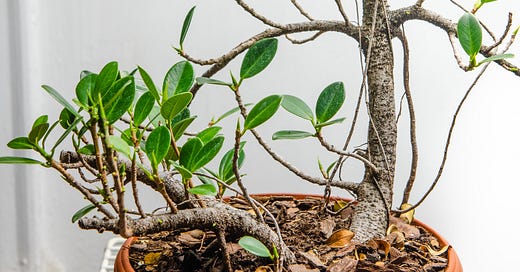


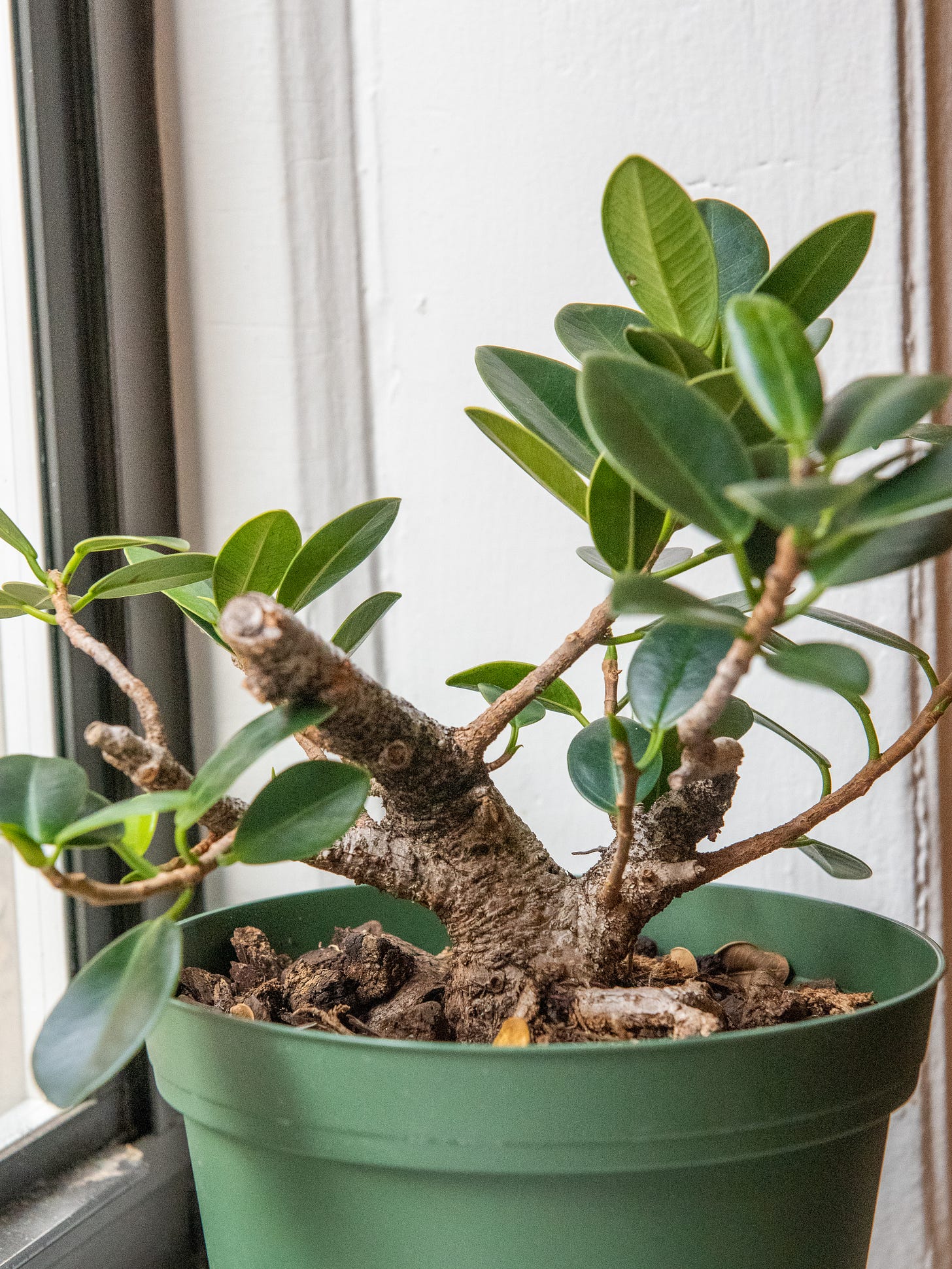
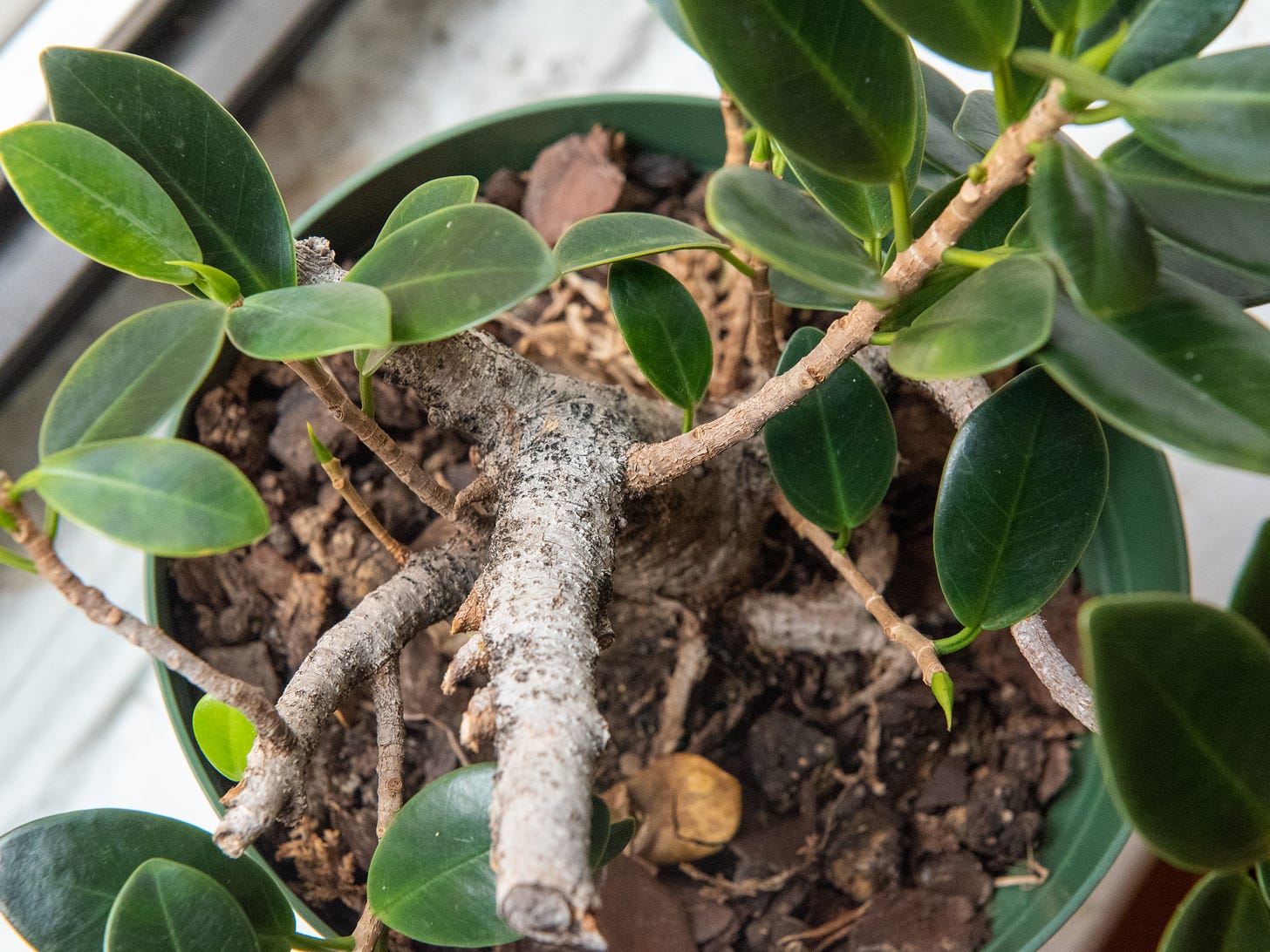
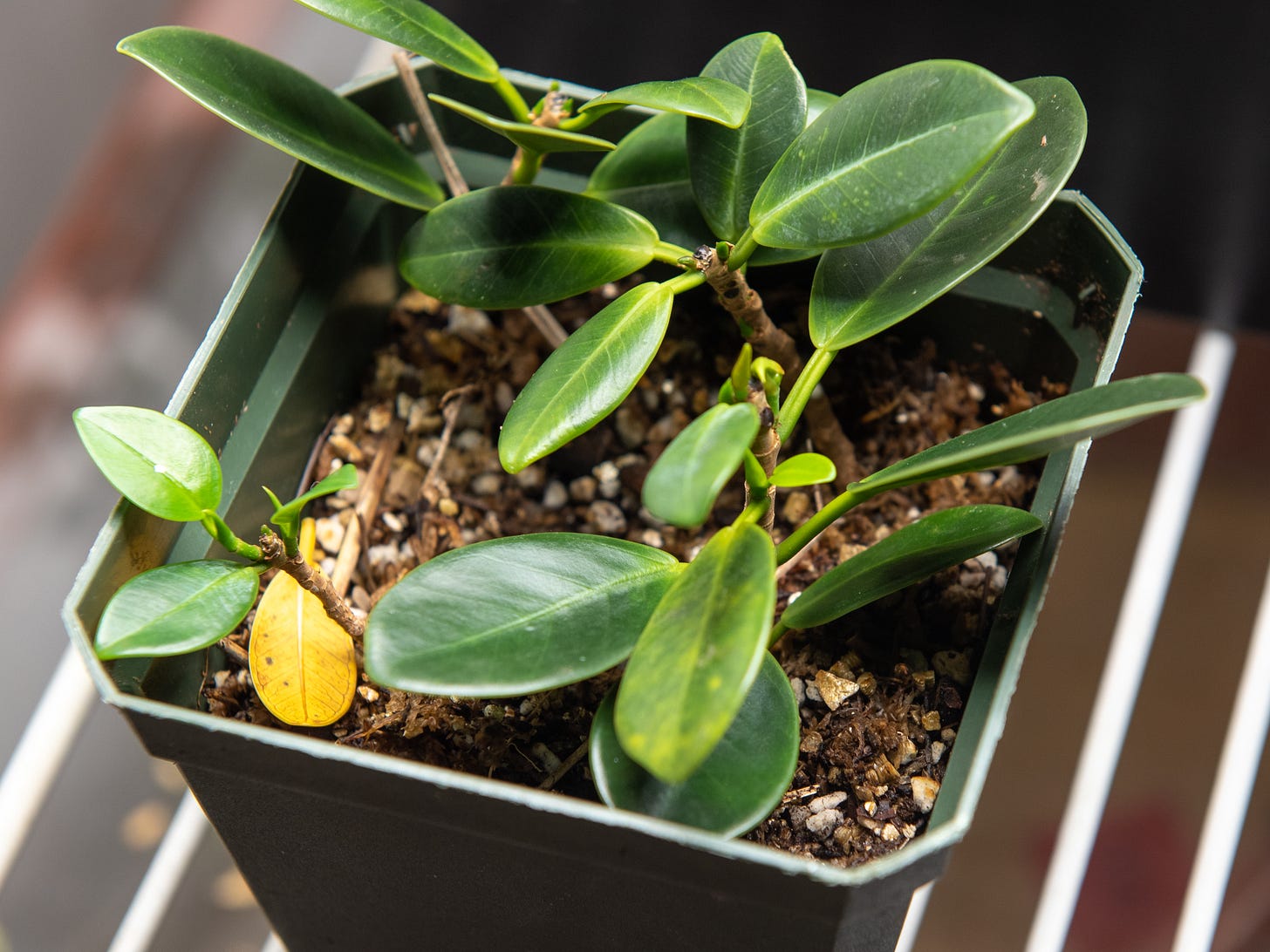
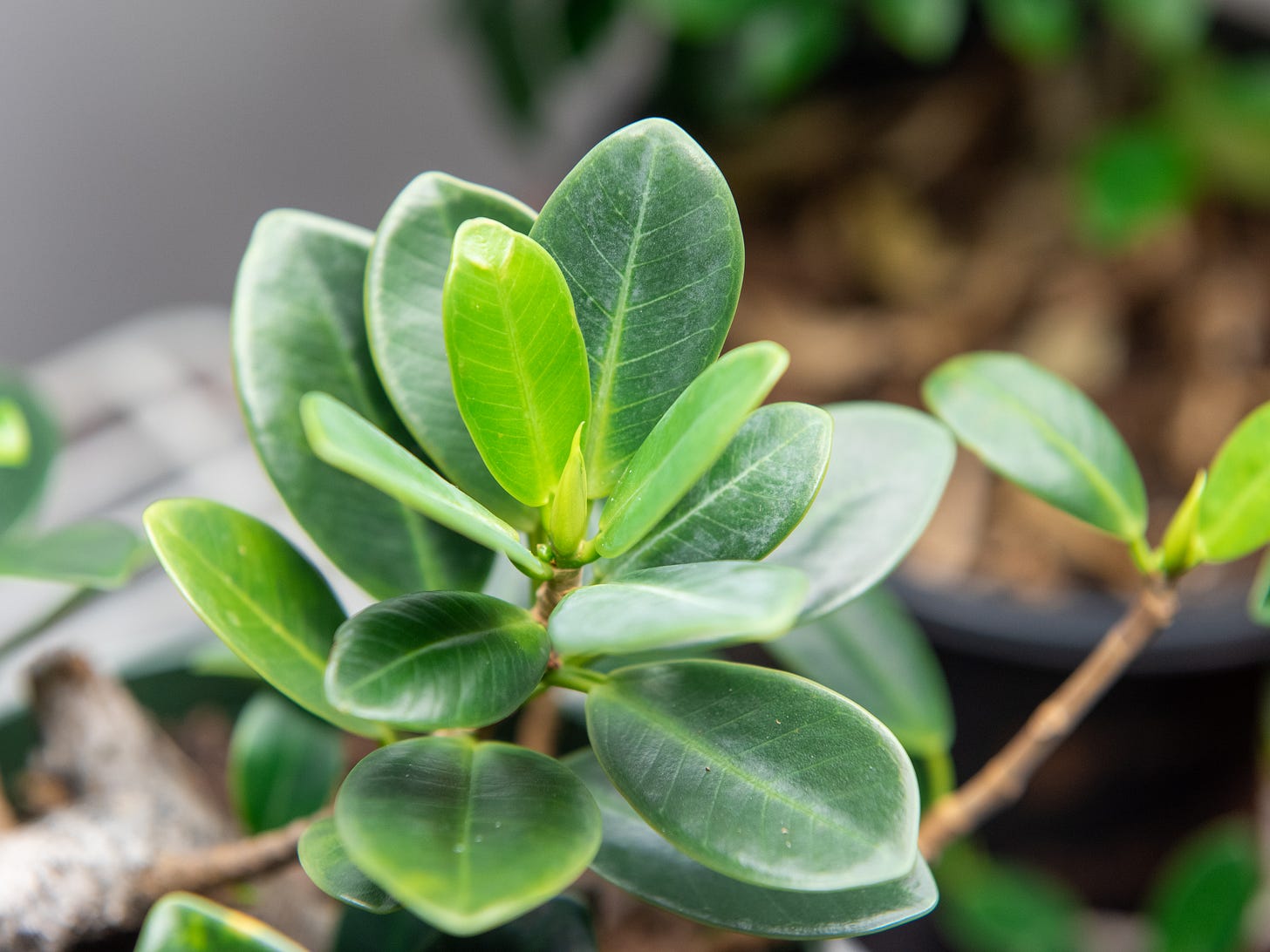
Really enjoyed this - I constantly struggle to have sufficient patience with my plants, even when that's what they need most. But I plan to keep practicing! (And thank you so much for including a link to Bulletin of Remarkable Trees!)
Your newsletter is such a highlight on my inbox. Such wonderful lessons! I recently bought a Natal plum (my first bonsai) in honor of a beloved pet who passed away in October and boy if it was a shock to see all its leaves fall off during that adjustment period. I have now learned he needs more frequent watering and after months, he is recovering nicely. He is so strong he deserves his name: Treequi the Mighty!
May your trees grow beautiful and plentiful (all in good time).